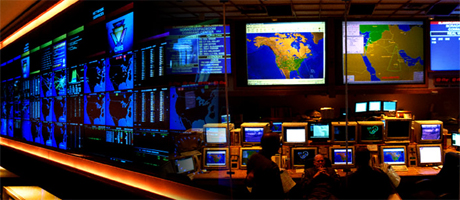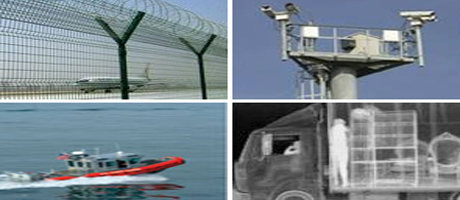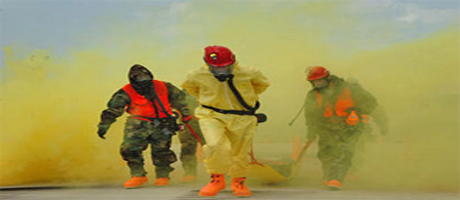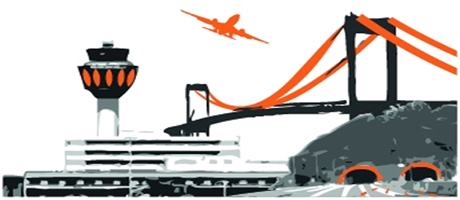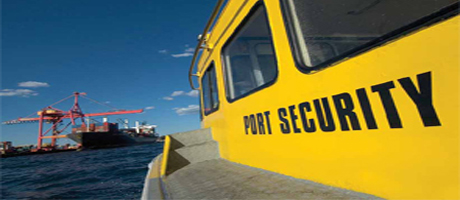Command & Control
Border Protection
There is concensus that border security is a pivotal function in protecting citizens from terrorists and their instruments of destruction. The complexity of the challenges at the border, and the realization that multiple points of vulnerability could be turned into expanded opportunities for interdiction, have led many nations around the world to assess and implement various approaches to layered security.
The notion of layering is that multiple and overlapping measures applied at several points in the border security environment could be more successful than just more targeted measures. To pursue a layered approach to border and transportation security would mean applying some measure of security effort to each of the following points of vulnerability / opportunity: transportation staff, passengers, conveyances, access control, cargo and baggage, ports, and security en route.
We work with our clients to develop a comprehensive strategy that identifies key points of vulnerability –wherever they exist– and help turn them into targets of opportunity for interdiction. We create a series of interdependent, overlapping, and reinforcing redundancies — designed to raise the odds that terrorist activity could be intercepted, and to serve as a deterrence function.
Command & Control
CBRN
As demonstrated in the recent past, even small groups of individuals have the ability to cause massive damage and extensive human suffering with little or no warning. Predictably, firefighters, police officers, EMS personnel, and civilian volunteers will respond and be on the scene moments after any attack occurs.
In such events, rescue and treatment of victims and control or containment of fire and other hazards will be greatly complicated if the site is also contaminated with nuclear, chemical, biological or radiological substances that pose an immediate threat to the health and safety of the emergency responders. Also, the immediate impact of such attacks may reach much further than the scene of the disaster. Thousands of injured and potentially contaminated victims may depart the scene, returning to the suburbs and satellite cities where they reside, or privately seeking medical assistance.
Emergency responders in metropolitan areas and far beyond will need to move quickly to deal with this predictable exodus from cities following any attack. We work very closely with clients to effectively train, equip, and prepare first responders and warfighters to meet these increasingly complex security challenges. We recommend precisely the right specialized tools, realistic training devices, and innovative technology to be made available to first responders and warfighters where and when they need them.
Command & Control
Command & Control
The mission challenges of the 21st century have increased significantly. Fortunately, new concepts of operations and approaches to command and control are able to provide significantly increased capabilities to deal with these challenges.
Today's missions are simultaneously more complex and more dynamic, requiring the collective capabilities and seamless integration of all available resources to allow the ability to observe, orient, decide and act at a high operational tempo. This requirement for assembling a diverse set of capabilities and resources into an effective solution is accompanied by shrinking windows of response opportunity. Placing a premium on being agile, an effective command and control solution will allow for: first, achieving shared awareness, and second, leveraging shared awareness to achieve a greater degree of self-synchronization - leading to dramatic increases in both agility and effectiveness.
We focus on the value and timeliness of information, rather than on the amount, and on getting that information to the right people in the right form. We work with our clients to help them exploit trust, cooperation, judgment, focus, and implicit understanding to lessen the effects of the uncertainty and the mission's challenges of the 21st century.
Command & Control
Critical Infrastructure
Critical infrastructures are and will continue to be increasingly important in the economy, despite their vulnerability to high consequence events. Therefore, ensuring their safety and protection require a clear understanding of the increasing risks and how to detect, minimize and prevent disruptions arising from various threats and malicious attacks.
Critical infrastructures have grown complex and even more interconnected - whereas a disruption in one may lead to disruptions in others. Critical infrastructures have been defined as those systems and assets, the destruction or incapacity of which would:
- impair government agencies' abilities to ensure the public's health and safety;
- undermine government capacities to maintain order and perform essential missions;
- damage the private sector's capability to ensure the orderly functioning of the economy;
- have a negative effect on the economy through the cascading disruption of other infrastructures;
- undermine the public's morale and confidence in the economic and political institutions.
Drawing on extensive experience in identifying, prioritizing, and coordinating protective measures as well as in-depth knowledge of vital industries, we work with our clients to help them develop an extensive portfolio of end-to-end solutions to meet the most stringent security requirements for the protection of infrastructures — critical to the safety of people, economy, essential government services, and national security and resilience.
Command & Control
Port Security
Ports represent a vital part of the international trade infrastructure for many countries around the globe. Ports vulnerabilities stem from inadequate security measures as well as from the challenge of monitoring the vast and rapidly increasing volume of cargo, persons, and vessels passing through them.
There is no single security countermeasure –such as the container security initiative (CSI) or the terrorist watch list– that can adequately address port security and safety concerns. Technology alone cannot secure ports and shipping, nor can adding additional security procedures, physical barriers, or additional manpower fully mitigate the risk. What will work is an integrated, carefully planned approach that incorporates the best elements of technical, physical, procedural and information security disciplines into a comprehensive strategy. This may include:
- advanced EO/IR and radar surveillance
- automated monitoring & video analytics
- face detection & license plate recognition
- high-throughput scanning & radiation detection
- intelligent real-time alert sensors
- secure, anti-tampering credentials
- wireless mobile command center
We work closely with our clients to help them develop and streamline the overall operation with a port-specific security management platform that integrates the various security, inspection and detection subsystems.
The mission challenges of the 21st century have increased significantly. Fortunately, new concepts of operations and approaches to command and control are able to provide significantly increased capabilities to deal with these challenges.
Today's missions are simultaneously more complex and more dynamic, requiring the collective capabilities and seamless integration of all available resources to allow the ability to observe, orient, decide and act at a high operational tempo. This requirement for assembling a diverse set of capabilities and resources into an effective solution is accompanied by shrinking windows of response opportunity. Placing a premium on being agile, an effective command and control solution will allow for: first, achieving shared awareness, and second, leveraging shared awareness to achieve a greater degree of self-synchronization - leading to dramatic increases in both agility and effectiveness.
We focus on the value and timeliness of information, rather than on the amount, and on getting that information to the right people in the right form. We work with our clients to help them exploit trust, cooperation, judgment, focus, and implicit understanding to lessen the effects of the uncertainty and the mission's challenges of the 21st century.

